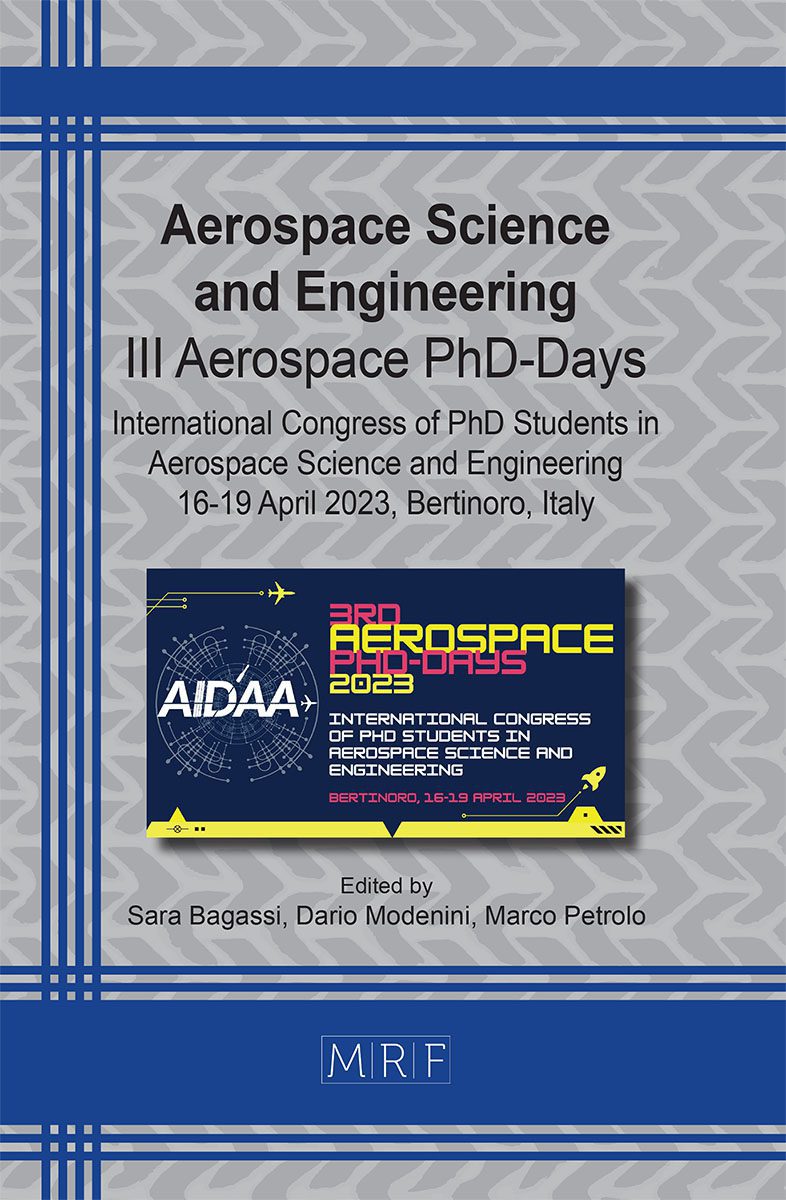Structural modeling of manufacture-induced gaps and overlaps by high-order unified finite elements
Alberto Racionero Sánchez-Majano
download PDFAbstract. Variable stiffness composites present additional tailoring capabilities if compared to classical straight fiber composites. However, the fabrication of these advanced composites leads inevitably to the presence of manufacturing signatures such as gaps and overlaps, which alter the mechanical behavior of the laminated components. In this work, the fundamental frequency of variable stiffness laminates with the presence of gaps and overlaps is studied. The Defect Layer Method is considered for modeling the defects, while the Carrera Unified Formulation is employed to derive the governing equations which will be solved by the Finite Element Method.
Keywords
Variable Angle Tow Composites, Defect Modeling, Gaps and Overlaps, Unified Formulation
Published online 9/1/2023, 8 pages
Copyright © 2023 by the author(s)
Published under license by Materials Research Forum LLC., Millersville PA, USA
Citation: Alberto Racionero Sánchez-Majano, Structural modeling of manufacture-induced gaps and overlaps by high-order unified finite elements, Materials Research Proceedings, Vol. 33, pp 301-308, 2023
DOI: https://doi.org/10.21741/9781644902677-44
The article was published as article 44 of the book Aerospace Science and Engineering
![]() Content from this work may be used under the terms of the Creative Commons Attribution 3.0 license. Any further distribution of this work must maintain attribution to the author(s) and the title of the work, journal citation and DOI.
Content from this work may be used under the terms of the Creative Commons Attribution 3.0 license. Any further distribution of this work must maintain attribution to the author(s) and the title of the work, journal citation and DOI.
References
[1] R. Olmedo, Z. Gürdal. Buckling response of laminates with spatially varying fiber orientations. In 34th Structures, Structural Dynamics and Materials Conferences (1993), 1567. https://doi.org/10.2514/6.1993-1567
[2] A.W. Blom, C.S. Lopes, P.J. Kromwijk, Z. Gürdal, P.P. Camanho. A theoretical model to study the influence of tow-drop areas on the stiffness and strength of variable-stiffness laminates. Journal of Composite Materials 43(5) (2009), 403-425. https://doi.org/10.1177/0021998308097675
[3] K. Fayazbakhsh, M.A. Nik, D. Pasini, L. Lessard. Defect layer method to capture effect of gaps and overlaps in variable stiffness laminates made by automated fiber placement. Composite Structure 97 (2013), 245-251. https://doi.org/10.1016/j.compstruct.2012.10.031
[4] E. Carrera, M. Cinefra, M. Petrolo, E. Zappino. Finite Element Analysis of Structures through Unified Formulation. Wiley & Sons, Hoboken, New Jersey. 2014.
[5] A.R. Sánchez-Majano, R. Azzara, A. Pagani, E. Carrera. Accurate stress analysis of variable angle tow shells by high-order equivalent-single-layer and layer-wise finite element models. Materials 14(21) (2021), 6486. https://doi.org/10.3390/ma14216486
[6] A. Pagani, M. Petrolo, A.R. Sánchez-Majano. Stochastic characterization of multiscale material uncertainties on the fibre-matrix interface stress state composite variable stiffness plates. International Journal of Engineering Science 183 (2023), 103787. https://doi.org/10.1016/j.ijengsci.2022.103787
[7] A.A. Vijayachandran, P. Davidson, A.M. Waas. Optimal fiber paths for robotically manufactured composite structural panels. International Journal of Non-Linear Mechanics 126 (2020), 103567. https://doi.org/10.1016/j.ijnonlinmec.2020.103567
[8] E. Carrera. Theories and finite elements for multi-layered, anisotropic, composite plates and shells. Archives of Computational Methods in Engineering 9(2) (2002), 87-140.
[9] H. Akhavan, P. Ribeiro. Natural modes of vibration of variable stiffness composite laminates with curvilinear fibers. Composite Structures 93(11) (2011), 3040-3047. https://doi.org/10.1016/j.compstruct.2011.04.027































